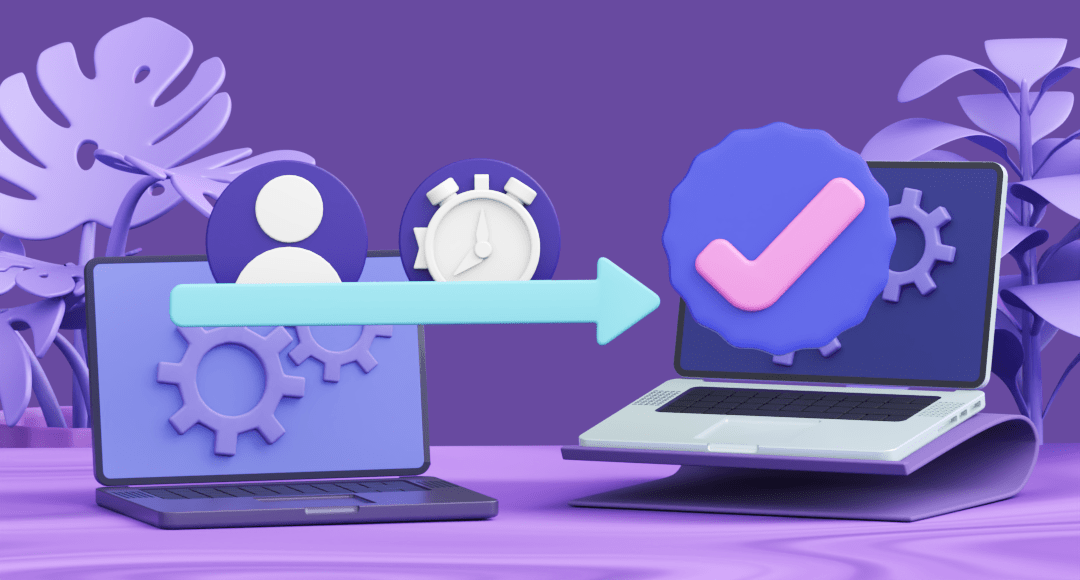What Are Project Resources? The Ultimate Guide
It’s difficult to create something from nothing. To have an output, you must also have a certain input. Project resources are, essentially, that input for a project.
Whether it’s your project team, the computers they work on, the time they’ll spend on tasks, or even the pen they will use to write down ideas — every resource can be pivotal to the success of your project. This is why managing those resources is equally important.
In this article, we will:
- Break down what project resources are,
- Explain what types of resources exist, and
- Tell you how to identify the resources you need.

Table of Contents
What are project resources, and why are they important?
Project resources include any materials, people, finances, or time necessary to complete your project deliverables, and subsequently, the project itself.
Poor resource management can cause severe delays, a decrease in project quality, and frustration for both you and your project team.
This is because every resource can turn out to be crucial for your project.
For example, your office has a printer. You’ve noticed that recently, your team has been getting held up in the line to use the printer. You decide to get another printer, but, when you call the vendor, you find out they are going under and don’t have any printers in stock.
You decide to find a new vendor. It takes more time than you’d think since you want to check out all options and find the best one. This process takes days. The printer line never goes away. The team’s results are dropping. Dissatisfaction is rising.
But, you could have avoided this issue altogether. If you’d analyzed your resources beforehand, you would have known how many printers you require for this project. Or better yet, you’d organize shifts or task execution times so that printer use overlaps as little as possible.
This issue and many similar ones are the reasons resources and resource awareness are the keys to your project’s success.
💡 Plaky Pro Tip
One way of ensuring your resources match the project’s demand is to master capacity planning. Learn more about capacity planning and the strategies you can use in this post:
Tangible vs intangible project resources
A common distinction made in project management is between tangible and intangible resources.
Tangible project resources
In essence, tangible resources include all resources that can be physically represented or measured in numbers. They have a physical presence and are easy to discern.
Tangible resources can be further divided into:
- Current resources and
- Fixed resources.
Current resources are generally spent within a year or two and have high liquidity, meaning they can easily be converted into cash. This includes materials, investments, and any money you have directed toward the project.
Fixed resources include anything that will likely be used for more than a year or two. Those are land, buildings, premises, machinery, or equipment like vehicles.
Intangible project resources
Intangible resources, on the other hand, can’t be represented physically, and their benefit to the project can’t be represented as a specific value.
As with tangible resources, we separate intangible resources into two categories:
- Definite and
- Indefinite.
Definite resources have an “expiration date”. More precisely, while you can’t measure the exact benefit they bring to the project, you do know the exact date they will stop benefitting the project.
For example, a contract allowing you to use public premises for filming videos for your project has an exact date when it stops being valid.
Some more intangible resources that are considered definite include copyrights, patents, leases, etc.
Indefinite resources exist and bring benefits for the duration of the whole project. For example, your project might have a brand name, which exists as long as the project does.
Other examples of indefinite intangible resources are intellectual property, goodwill of customers and employees, research findings, etc.
Human resources also fit into the category of intangible resources, while they are, on rare occasions, also mentioned as tangible resources. But why do we consider them intangible?
When you hire a team member for your project, you do it because of their skills and expertise. Knowledge is something that cannot be measured in numbers and it’s not physical, therefore, it is intangible.
💡 Plaky Pro Tip
Learn how to perform effective resource allocation in the guide below:
What are the 4 types of project resources?
Project resources come in many different forms. Some of these you can probably guess — like the project team or the tools they need — but others may not immediately spring to mind like these.
So, apart from the tangible-intangible categorization, people often divide project resources into 4 types:
- Human resources,
- Financial resources,
- Material resources, and
- Time as a resource.
We’ll look at each in more detail.
Type #1: Human resources
The first type we will talk about is human resources. And for a good reason — your workforce is an essential part of your organization, so you must pay close attention to how you handle them.
This resource type includes all people involved in the project, such as:
- Project managers — the people responsible for the project’s organization and overseeing its development.
- Project team members — the people responsible for the project’s development itself. These could be your IT professionals, salesmen, designers, etc.
- External human resources — the people who work on the project but aren’t in the internal project team. For example, while a designer can be a part of your internal project team, they can also be a contractor — if, let’s say, you hire a freelance designer to create your logo.
- Stakeholders — project stakeholders are all the individuals affected by your project. These can be shareholders, who have a direct investment in your project, but also customers, who will experience the project’s result.
It’s best to find a systematic way of tracking the people involved in the project. You can do this through PM software such as Plaky, which allows you to assign tasks to team members and always see who’s working on what.
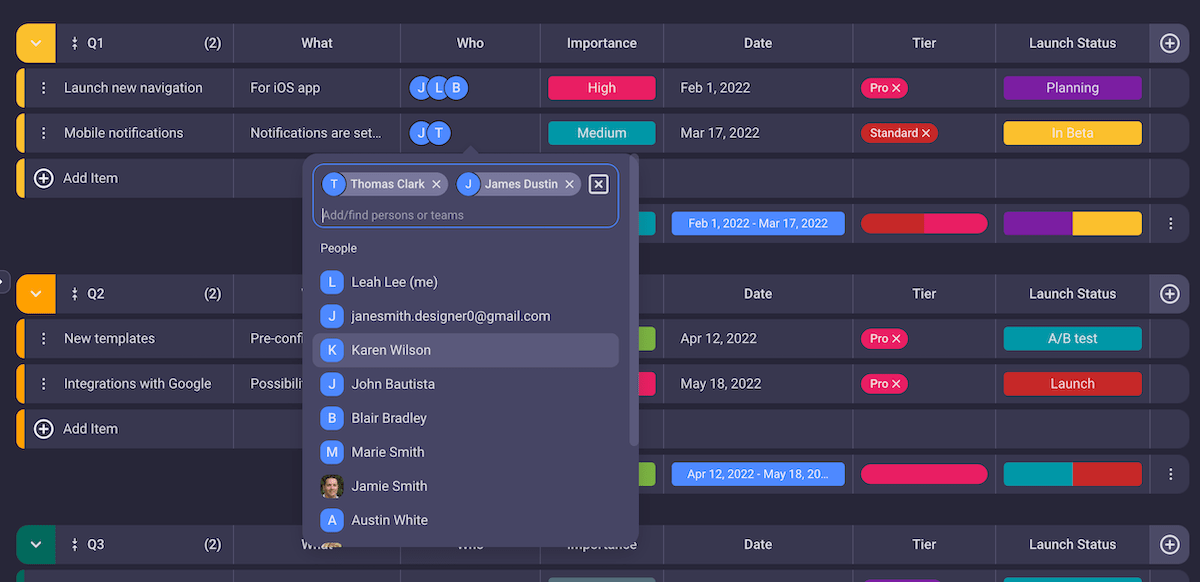
After assigning tasks to team members, you can use the filter Plaky feature to see what tasks a specific team member is working on.
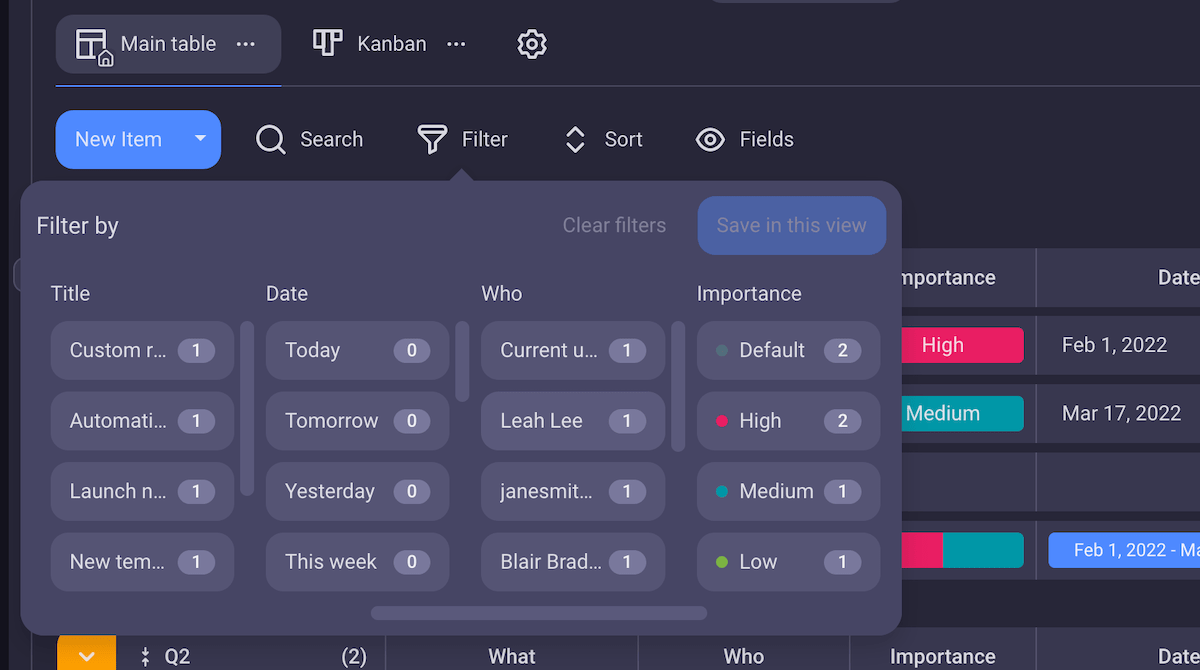
And lastly, you can also give external stakeholders guest access to your Plaky project board, keeping everyone relevant to the project updated on its progress.
💡 Plaky Pro Tip
If you’re looking for better ways to manage human resources, check out these blog posts:
Type #2: Financial resources
In essence, financial resources are all monetary funds you require and can acquire for the benefit of your project.
We can make out some subtypes of financial resources as well, such as:
- Project budget — the sum of money allocated to the project based on the project’s cost projections you assessed when making a project management plan. It should account for all that is necessary for your project to be completed, including labor costs, material costs, etc.
- External funds — any external finances you acquire for the project. For example, a bank loan can serve as a project fund.
- Grants — grants are the money the government gives to individuals or organizations. This can be for a variety of reasons, for example, if your project’s result is something that gives a public benefit, such as a non-profit charity project.
You can use a PM tool to track finances as well, i.e. by tracking the cost of each individual task in the project.
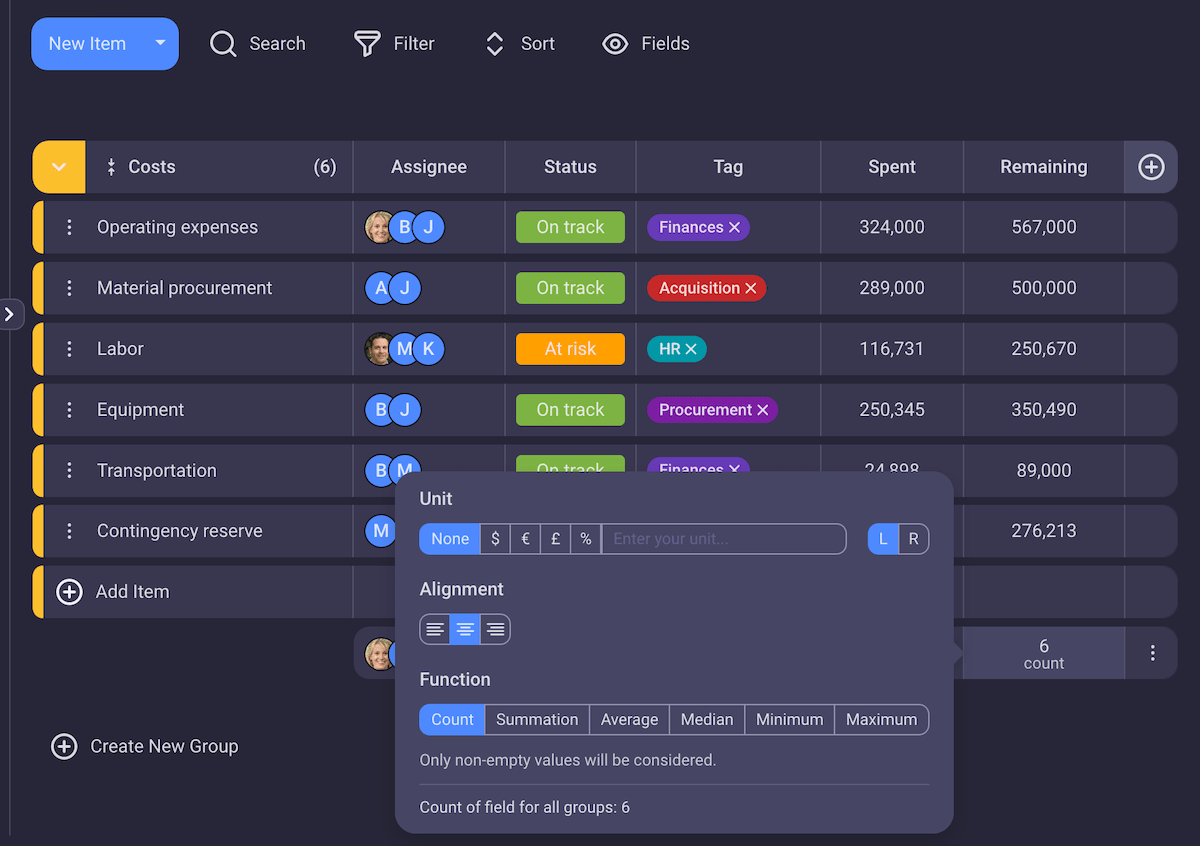
💡 Plaky Pro Tip
If you want to improve your financial management, check out this guide on project accounting:
Type #3: Material resources
Material resources are, in simple terms, anything your organization owns that will be used for the benefit of the project.
This can range from the building your team works in to the pen you use to write down ideas.
We can categorize material resources into:
- Raw materials — any materials that have a one-time use and are expended as soon as the product is created. For example, in a bakery, raw materials would include flour, eggs, sugar, etc.
- Tools — any tool or machinery that you need for the project. In the bakery example, a tool can be anything from a rolling pin to a dough-mixing machine. But, even though tools aren’t one-time use like raw materials, their value and usefulness decrease over time. This is called depreciation, and you should pay close attention to it. Depreciation can happen for 2 reasons — one is the physical deterioration of tools over time (old machines break down easily, old equipment is more susceptible to breaking, etc.). The other is a relative decrease in value due to newer tools of the same kind appearing on the market.
- Premises — any physical space in which your project is executed. This can range from office spaces to storage facilities.
- Communication tools — any medium of communication used specifically for your project. Phones, local networks, or team chat apps used only for communication in the project itself belong in this subtype.
Again, you can use PM software to track material resources as well. For example, in the bakery example, you can make a field that tracks the machines required for each task.
This can help you determine the schedule that ensures the tasks that require the same machinery don’t overlap and reduce idle time.
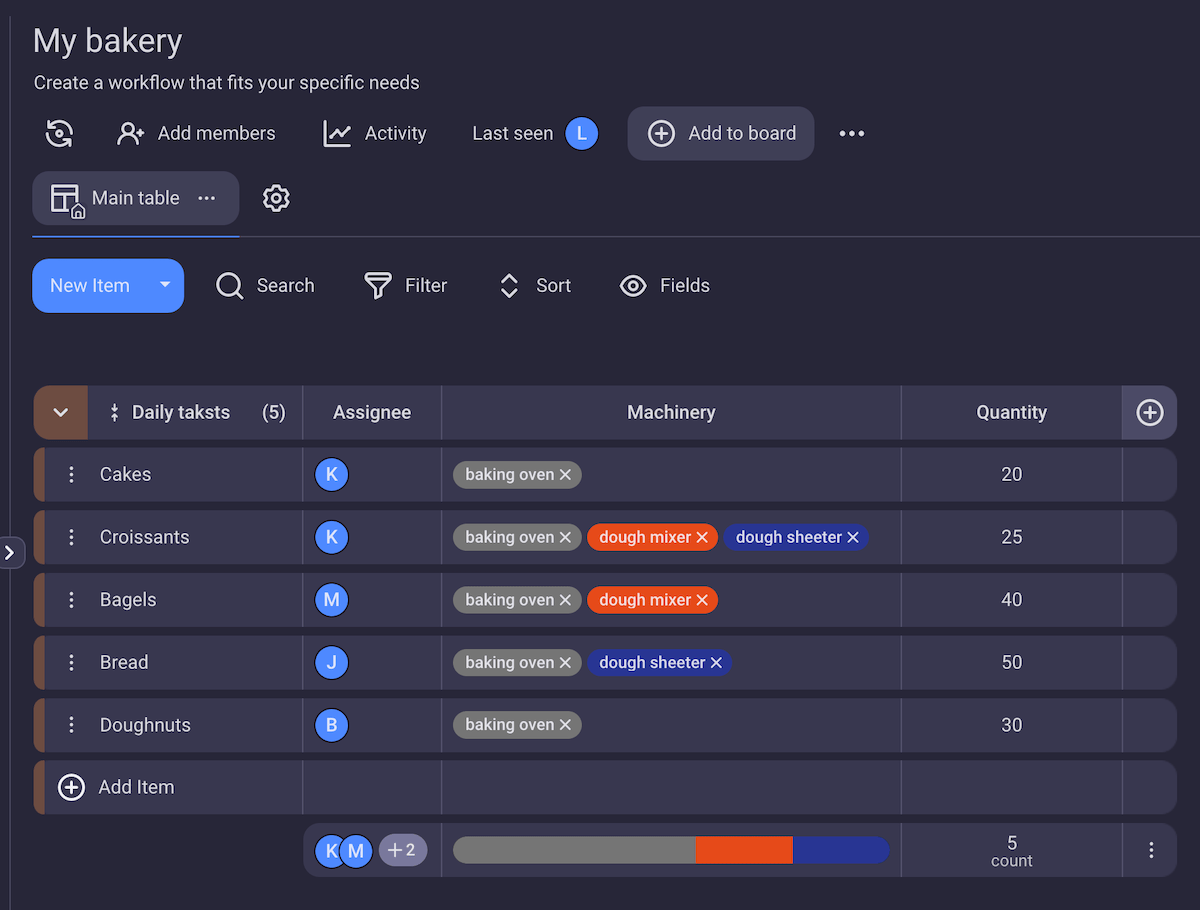
Type #4: Time as a resource
As we’ve mentioned, anything that your project’s completion depends on can be considered a resource — and the time it takes to finish it is no different.
The best way to understand and analyze time as your project resource is to break it down. Instead of looking at it as one chunk of time allotted to the entire project, see how the time allotted to different project phases, deliverables, and tasks comprise this chunk.
Of course, keep in mind that the time it takes to complete a task depends on other resources available to you.
For example — going back to our bakery example — the time it takes to create 100 baked goods is significantly reduced if you double the workforce. That reduction, however, has a limit, depending on your other resources.
Say each worker has to wait for the dough to be prepared in a dough-mixing machine — the increase in your workforce will not result in better productivity if your employees need to wait in line to use the dough machine.
And vice versa, increasing the number of machines will have no effect without the increase in the workforce since no one will be using the extra machines.
Time tracking is a great way of finding out how much time tasks tend to take to complete. Tracking gives you valuable insight for future planning of these tasks, as you’ll be more precise in determining how much time they should take.
For this, Plaky has an integration with Clockify — the most popular time-tracking tool on the market — that allows you to track time spent on each Plaky task, giving you access to that much-needed information.
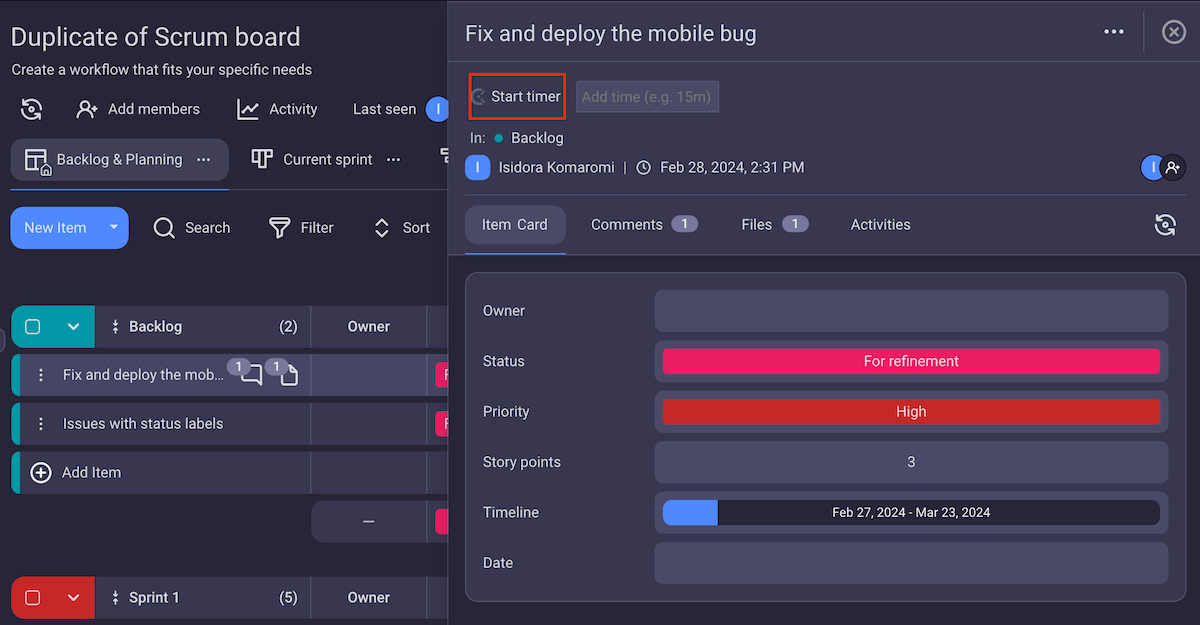
💡 Plaky Pro Tip
If you’d like to improve your project time management, take a look at this guide:
How to identify project resources
So, now we know what project resources are, but how do we know which ones we will need for our project? Here are some tips on finding out which resources your project requires:
- Know your project tasks — You must know the details of each task that will be executed in your project. For example, knowing your team will need a certain number of computers is great, but are you aware of what environments they need? Will you need to purchase a specific piece of software?
- Always plan ahead — Nobody likes being caught unprepared — and neither will you. Be sure to determine the right order of actions to save your time. For example, determine the resources that are more difficult to acquire and make sure to order them early on.
- Identify resources necessary to start the project — Some resources are so important that your project can’t even start without them. For example, before you can even start planning on which other resources you can acquire, you must first be aware of the financial resources at your disposal.
- Communicate with your team members — It’s best to consult with the project team on the resources you need to obtain since they are the ones who will be using them the most. If you have regular meetings, practice transparency, and communicate with your project team, you’ll be more aware of exactly the resources they need to get the tasks done.
💡 Plaky Pro Tip
Managing project resources can be tricky — but we’ve prepared a bunch of free resource planning templates to help you get organized:
Conclusion: Project resources are crucial for the success of your project
Anyone can loosely determine what resources their project will need. However, not planning in advance and in detail might lead to falling behind schedule, confusion, and general dissatisfaction with the project.
Minute improvements in resource organization often mean great improvements for the project. Because of this, you’ll want to practice your resource management as soon as possible.
Always make sure to analyze your resource needs thoroughly, even before the beginning of your project.
📖 Knowing how to manage project resources is a critical part of project management. But, doing so requires mastery over many other, interconnected aspects of a project first. To learn more about project management and all the terminology needed to master the craft, visit our Project Management Glossary of Terms.
References:
- Chand, S. (2022, November 23) What is project resource management and how to perform it? Retrieved January 12, 2023, from https://www.edureka.co/blog/project-resource-management/
- Koehler, J. (2019, May 17) A Guide to Organizational Resources and How to Manage Them. Retrieved January 16, 2023, from https://www.uagrantham.edu/blog/a-guide-to-organizational-resources-and-how-to-manage-them/
- Donato, H. (2022, March 24) Top 10 Project Resource Management Best Practices for Project Managers. Retrieved January 16, 2023, from https://project-management.com/project-resource-management-best-practices/
- Indeed editorial team (2022, December 10) What is a Project Resource Management Plan (With Functions). Retrieved January 16, 2023, from https://ca.indeed.com/career-advice/career-development/project-resource-management-plan
 Project Management Hub
Project Management Hub 






